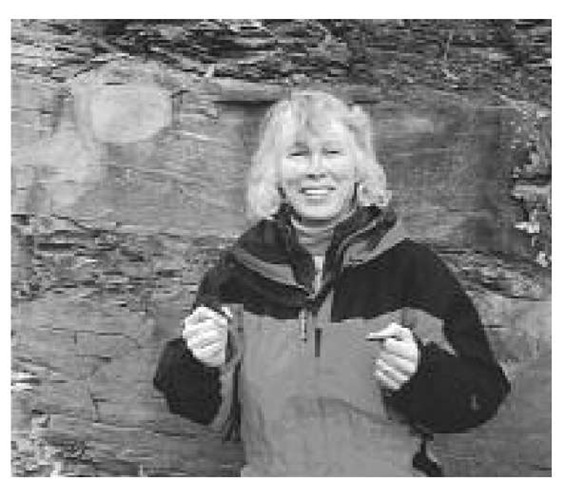(1953- ) American Stratigrapher
The Earth Science department at Cornell University has undertaken a broad multi-investigator, multidisciplinary research objective called the Cornell Andes Project. This project focuses on modern mountain building in relation to plate tectonics and climate. Teresa Jordan contributes the expertise of physical stratigraphy and sedi-mentology to the project. She is a strongly contributing member of this team because she traditionally looks broadly into problems integrating other geologic research with her stratigraphic studies. She collaborates with other diverse Earth scientists like earthquake seismologists, gravity-magnetic geophysicists, groundwater hydrologists, stable isotope geochemists, structural geologists, igneous petrologists-geochemists, climatologists, and plate tectonic modelers. Jordan investigates stratigraphy and related structures in the field and combines them with satellite image analysis of the surface features, seismic stratigraphy which uses seismic reflection profiles (like sonograms of the Earth) to determine the geometry of the strata underground, and magnetic polarity stratigraphy which yields ages of the rocks based upon the preserved orientation of the Earth’s magnetic field at the time of deposition compared to a calibrated chart. She combines these data with the textural and compositional distribution of the sediments as studied microscopically to determine the history of the stratigraphic sequences, the geometry and timing of subsidence of the basin, the source of the sediments making up the rock and consequently the nearby uplift history of the surrounding rocks. She also determines the environmental conditions and evaluates whether the observed changes are episodic or simply continuous slow change. With all of this information in hand, Jordan then models the history of the basin. This process allows her to isolate the controlling factors in the changes she observes. Some factors can include plate tectonics, sea level change, properties of the source region for the sediments, and climate change. Such a multidisciplinary approach to large-scale geologic problems sets a new standard for research and Teresa Jordan is one of the leaders in this field.
This move to undertake research in the Argentine and Chilean Andes is a natural outgrowth of Teresa Jordan’s background. She began her research on the development of sedimentary basins in highly deforming mountainous areas by studying the ancestral Rocky Mountains in western North America (Idaho and Wyoming). She calculated the flexing of the crust downward under the tremendous loads imposed during mountain building which consequently forms basins in the foreland (just ahead of the main mountains) that fill with sediment. She took this experience to the Andes Mountains where she investigated the Bermejo foreland basin in western Argentina. She looked at the fluvial drainage patterns, as well as the basinal distribution of sediment grainsizes and the development of evaporite deposits. This climatic and hydrologic information was then correlated with concurrent structural studies to determine the sedimentary response to deformation versus climate changes. Because the area is a desert, small changes in water supply have a great impact on sediment supply and distribution as well as organic component resulting from changes in plant growth. Several important papers have resulted from this work including, “Andean Tectonics Related to the Geometry of Subducted Nazca Plate” and “Retroarc Forearc Basins,” among others.
Teresa Jordan explains the geology of the rock exposure in the background
Teresa Jordan was born on April 14, 1953, in rural Dunkirk, New York. She attended Rensselaer Polytechnic Institute in Troy, New York, where she earned a bachelor of science degree in geology in 1974 and received the Joseph L. Rosenholtz Award. She completed her graduate studies at Stanford University, California, on a National Science Foundation graduate fellowship, where she completed a Ph.D. in geology in 1979. She also received an American Association of University Women doctoral fellowship and worked as a geologist for the U.S. Geological Survey upon graduation. That year Jordan accepted a position as a postdoctoral research scientist at Cornell University in Ithaca, New York, but joined the faculty in 1984. She remains at Cornell University as a full professor today. She was a visiting scientist at the Colorado School of Mines in Golden. Teresa Jordan is married to structural geologist and fellow Cornell University professor Richard All-mendinger. They have one daughter.
Teresa Jordan is amid a very productive career. She is an author of more than 90 scientific articles in international journals and professional volumes. Many of these are seminal papers on the tectonics and stratigraphy of the Andes Mountains. In recognition of her contributions to geology, Jordan received the National Science Foundation Award to Women Faculty in Science and Engineering. She performed several instances of service to the profession, including membership on several committees for the Geological Society of America, as well as on several panels for the National Research Council. She has also taught numerous short courses to professional societies and oil companies in Argentina and Chile.

